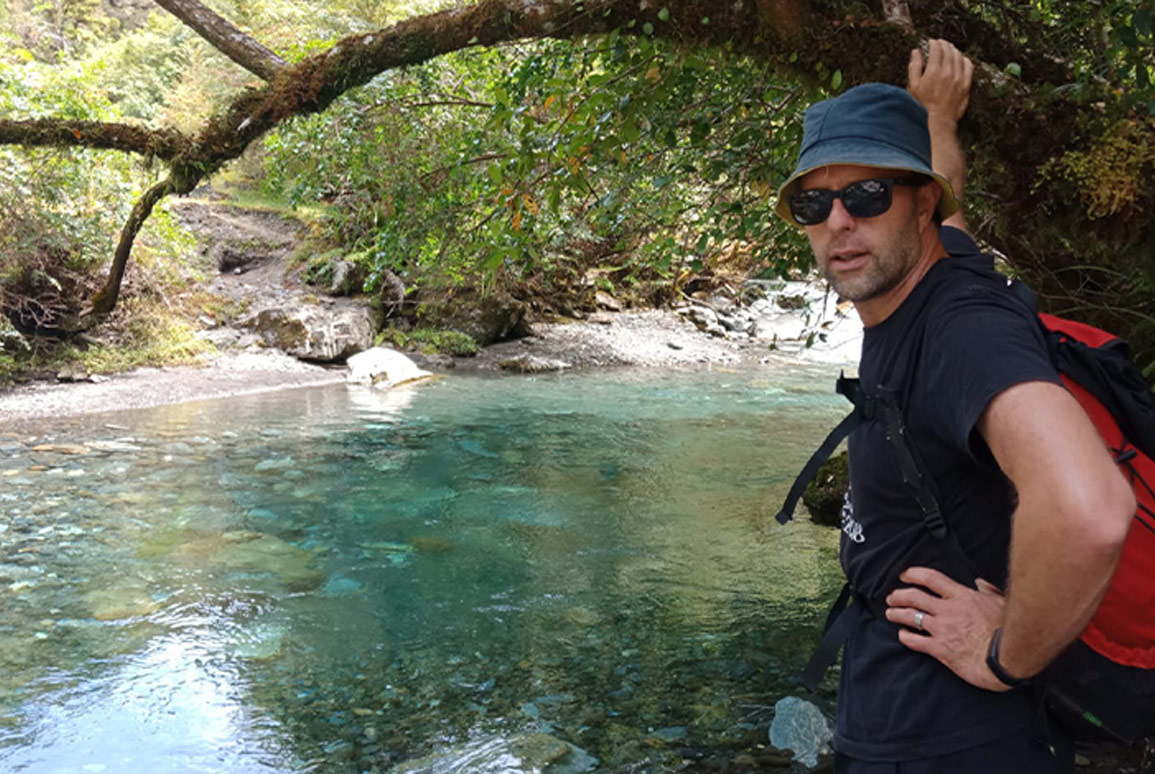Meet the Boffa Miskell ecology team: Antony Kusabs
10 August 2022
Joining the ecology team last year, Wellington-based Antony Kusabs' in-depth knowledge of New Zealand's flora is augmented by his passion for history and design.

It’s not unusual for ecologists to find their passion for the outdoors as children, and spend their early career years tramping through the most remote parts of New Zealand collecting data or getting involved with hands-on field work. It was no different for Antony Kusabs.
“I grew up in Auckland, which is blessed with pockets of native bush throughout the city,” Antony says. “I think that’s where my interest in forests and plants started, even though we were more likely crashing around and building forts rather than putting anything under a lens.”
“Biology and horticulture were strong interests at high school; and so was art – and I thought those interests would lead me down the landscape architecture route. But at Lincoln University, it morphed into Ecology,” he continues. “Gaining those specific botany-related skills began at Uni, but were mostly developed on the job, and I never looked back.”
Antony spent the first decade of his career following a not-uncommon path of working for organisations like the Department of Conservation, Green Corps Australia and Landcare Research. He honed his skillset through collecting specimens, managing field teams, monitoring vegetation and implementing wetland restorations. He produced Assessments of Environmental Effects, presented evidence in Environment Court, and worked as an independent ecological consultant for a few years.
But in 2010, Antony’s career took an unusual direction. He went to work for The Museum of New Zealand Te Papa Tongarewa — New Zealand’s national museum, located in Wellington.
During his 11-year tenure with Te Papa, Antony was a Collection Manager with the Natural History team, specialising in botany and managing the herbarium (collection of dried plant specimens); and he undertook the lead collection manager role for the comprehensive refresh of Te Papa’s permanent Natural History exhibition – Te Taiao.
“This was a once in a career type opportunity, which involved managing the deinstallation of all collection specimens and objects from the previous exhibitions, and the installation of more than a thousand specimens and objects for Te Taiao,” he explains.
“I was working across collections and disciplines, and I was able to experience the various facets of my colleagues’ work from concept to delivery.”
Antony was able to infuse the exhibition with his passion for Aotearoa’s unique native plants.
“Before Te Taiao, it was rare to see a botanical specimen on display at Te Papa. Te Taiao now exhibits the very oldest New Zealand herbarium specimens, collected by naturalists on the Endeavour, ” he says. “We also collected fresh specimens specifically for exhibit, which can be seen in Te Ika Whenua | The Endemic Wall. Rather than being pressed flat, as you often see plant specimens, many of these were dried in tubs of silica gel so they maintained their natural shape. We also suspended specimens in resin as an interactive element for the drawing table.”
Now, with over 20 years’ experience working for public, corporate, iwi and private organisations, Antony is experienced in data collection, restoration ecology, ecological processes, ecological assessments, and preparing evidence. Since joining Boffa Miskell he has been busy with wind energy, subdivision, and restoration projects, establishing terrestrial ecology values of a site and developing assessment of effects.
There’s still plenty of opportunity for Antony to share his passion for, and comprehensive knowledge of, Aotearoa’s flora with the wider ecology team.
“Early this year, we established special interest groups (SIGs) for all the ecology sub-disciplines and I co-lead the Botany group,” he explains.
“It’s important to create space to grow and share knowledge and ensure our best practice is consistent within the company. Our clients want the best service possible, and these special-interest groups are an on-going opportunity to improve the team’s technical capability and efficiency in the field.”
You’d think Antony’s blend of scientific and curatorial skills would be on full display at home, with a jungle-like collection of houseplants (maybe even a greenhouse?); but he admits the proverbial saying “the shoemaker’s children go barefoot” is somewhat closer to reality.
“Our house is too small for house plants! In the past I’ve planted natives at every property I lived at, leaving a legacy of little backyard forests behind. We’ve lived on our current quarter-acre section in Upper Hutt since 2006, and most of my gardening efforts there have focused on a native shrub garden at the front of the house. I’d love to have an alpine shrub garden, but so far, I haven’t put enough effort into developing the right soil.”
It’s perhaps a reflection that, like most ecologists, Antony prefers time outdoors.
“Relaxation for me is just hanging out with my wife, and our young daughter and son. I love anything outdoors – favourites include free diving, tramping and skiing; and indoors involves drawing, yoga, reading, and a slow garage renovation.”

